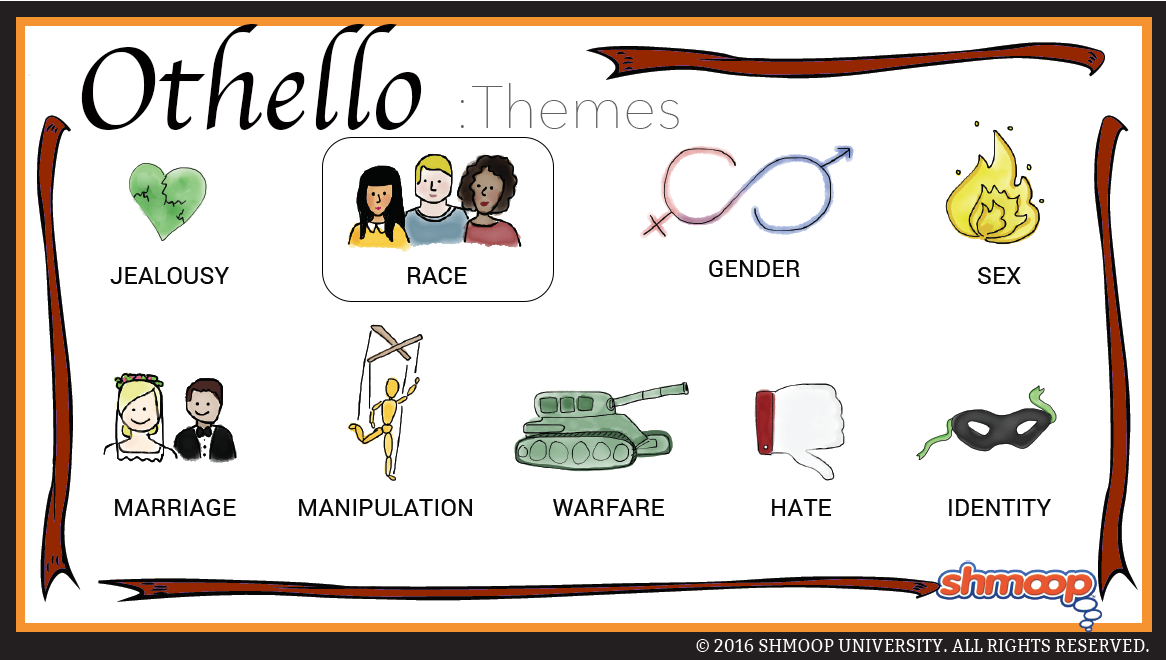

SYMBOLS IN OTHELLO FREE
(1.3.5) This is a rather elaborate analogy between gardening and exercising free will. Our bodies are our gardens, to the whichour wills are gardeners: so that if we will plantnettles, or sow lettuce either to have it sterilewith idleness, or manured with industry, why,the power and corrigible authority of this lies in our wills.

Willows at the edge of water are a traditional symbol of women deserted by their lovers. She herself is worried that the man she married has gone crazy and will desert her. This song, supposedly sung originally by one of Desdemona’s mother’s servants who loved a crazy guy, reflects Desdemona’s own situation. Think about it – what’s more manly than a big collection of warlike objects? Desdemona has deflated him he is un-manned by her betrayal.Īs Desdemona is preparing for bed the night she will be murdered, she starts singing a song about willow trees. Here, these implements of war become symbols of Othello’s sexuality. We, the innocent and unknowing reader, accept this with a little confusion and move right into the sordid plot.We might forget about the whole war thing until Othello’s crucial monologue in Act 3, Scene 3, in which he describes the components of the battlefield – horses, troops, trumpets, banners, cannons – and how they are all lost to him now that he knows Desdemona is unfaithful. And then, due to inclement weather, there is no war. Check out how Iago plays the martyr when Othello warns him that he, Iago, better not be lying about Desdemona:IAGOO wretched fool.That livest to make thine honesty a vice!O monstrous world! Take note, take note, O world,To be direct and honest is not safe.I thank you for this profit and from henceI’ll love no friend, sith love breeds such offence.OTHELLO Nay, stay: thou shouldst be honest.IAGO I should be wise, for honesty’s a foolAnd loses that it works for.OTHELLO By the world,I think my wife be honest and think she is not (3.3.52)Įvery major character in the play packs up and heads for Cyprus, where we’ve been promised a bloody battle. The clearest example of this is how Iago uses personal dishonesty (lies and deceit) to convince Othello that his wife is sexually dishonest (cheating on her husband), all while pretending to be looking out for the best interests of his so-called friend. Desdemona’s Fidelity once Othello finds it in Cassio’s hand he is convinced that D is unfaithful so the handkerchief represents a wedding dress stained with Virgins Blood so when Desdemona Loses it she loses her chastity this is why Iago convinces Emilia to steal it from Desdemona,it has a lots of sentimental value and once Othello finds out Desdemona’s lost it he will get mad at her. The most dominant symbol circulates through the play since its Othello’s love token to Desdemona.


 0 kommentar(er)
0 kommentar(er)
